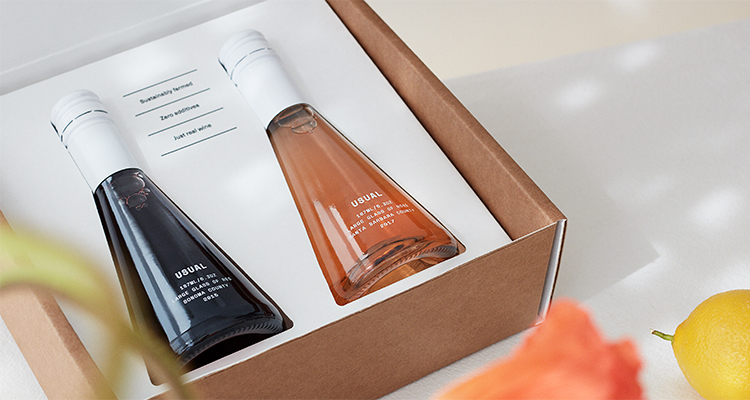Usual Wines is a direct to consumer brand that (currently) offers only online ordering, which, at first blush, is certainly a breath of fresh air in the traditionally behind-the-times wine industry. They offer single-serve wines in 187ml (6.3oz) bottles, the perfect size for an individual serving, especially for those trying to limit calories, alcohol intake, etc. (It’s a foolproof way to avoid that tantalizing, willpower-crushing open bottle demanding a second glass.)
Despite the non-traditional packaging, this tasty wine does come across as well-crafted. The rose in particular is clean and crisp, a nice Provencal style that isn’t too tutti-frutti and thus will be as comfortable next to some food as it will be on a sunset-drenched patio. The red is a little oak-forward for my taste, but it’s otherwise balanced and drinkable.
As with any item that offers convenience sizes — whether it be 100-calorie packs of almonds, individually-wrapped chocolates or pony bottles of beer — there’s a cost associated with the perfect portion. At $8 per 187ml bottle, Usual does seem on the high side. At a restaurant, sure, that’s a nice glass price. But at home?
Considering a 750ml bottle of this wine, if it came in that size, might cost around $16 (a number I admittedly chose due to easy math, but also seems reasonable), the convenience charge would then amount to 50% of the total cost, or $4 per serving. For me, even though it includes shipping, that’s tough to get over… though value is obviously an individual decision.
The other question one might ask about Usual Wines is whether bottles are the best long-term choice. It seems the trend in these single serving wine packages — though they’re all over the place at the moment — is moving decidedly towards cans. Advantages include being lighter (thus both cheaper and better for the environment), not breakable (allowing them to be easily carried anywhere) and opaque (preventing light from damaging the contents). And considering the inroads can have made in the beer world over the past few years, it seems likely they’ll continue to do the same with wine. Usual’s bottles are pretty, but are they practical?

